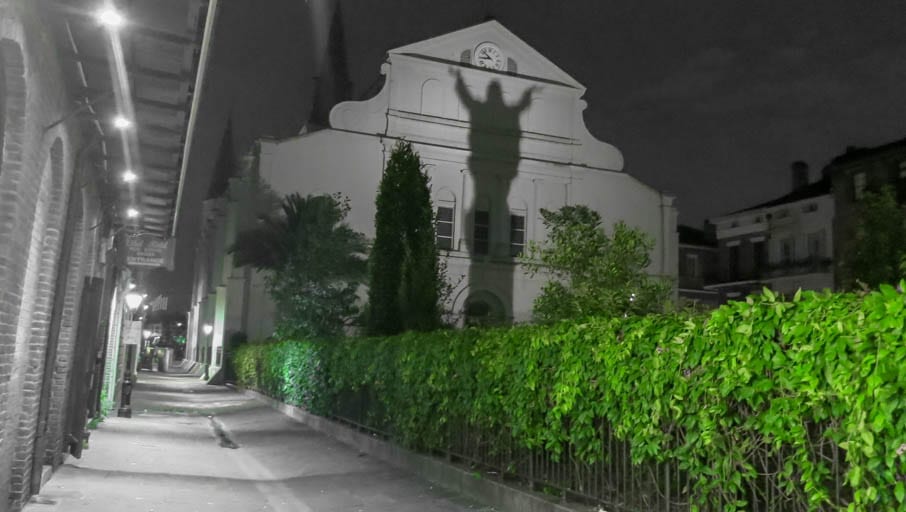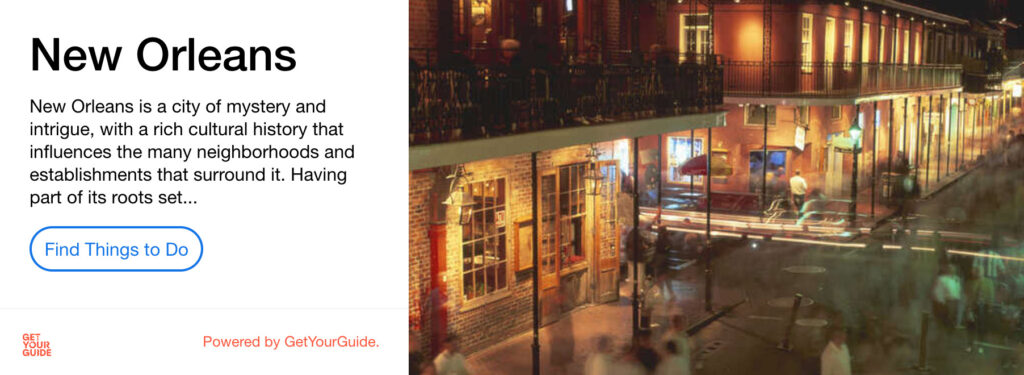The Dark History of New Orleans: A Walking Tour
Hey there! This post may contain affiliate links, which means I’ll receive a commission if you purchase through my link, at no extra cost to you. Please see my legal page for more details.
If you’re looking for a ghostly guide to the dark history of New Orleans, look no further than this self-guided, walking tour of the Big Easy.
Here’s where we’re headed:
But first:
Why is the History of New Orleans So Dark?
Maybe it’s the above-ground graves or maybe it’s the colorful history of voodoo and dark magic, slavery and rebellion, fires and plagues and hurricanes.
Whatever the reason, New Orleans is always at the top of any list of America’s most haunted cities.
And after many trips to the Crescent City, I can certainly see why. For one thing, there are endless stories like this one:
First Stop: LaLaurie Mansion and a Tortured History
LaLaurie Mansion presides over Royal Street in the French Quarter where a female serial killer once tortured the enslaved people on her property. There were rumors about the twice-widowed Madame LaLaurie – also known as Madame Blanque – for years before a fire in 1834 necessitated entry into the mansion.
It’s said that an enslaved cook who was chained to the stove purposefully lit the fire in either a suicide attempt or a plea for help. Once inside, first responders entered the slaves’ quarters and found people in various stages of mutilation.
Spirits are rumored to haunt the home, including that of a little girl who is said to have fallen from the roof in an attempt to outrun the whip of Madame Blanque. She was buried in the yard along with an unknown number of enslaved people.
The house, however, is a rebuilt version of the one where Madame LaLaurie ruled with her cruel whip. The people of New Orleans burned down the home upon hearing of the torture. LaLaurie escaped and fled to France.
The Dark History of Slavery in New Orleans
The LaLaurie Mansion in the frolicking French Quarter is mere blocks from the crescent-shaped bend in the mighty Mississippi River where ships have long docked to unload their goods, including, at one time, enslaved people from the Caribbean and neighboring southern states.
Many slaves passed through New Orleans on their way to plantations across the south, entering a slave trade that Solomon Northup described in brutal detail in his memoir “Twelve Years a Slave,” which later became an Oscar-winning movie.
Northup was a free-born African-American who was kidnapped in Washington, DC, shipped to New Orleans, and sold at auction.
Second Stop: the Former St. Louis Exchange Hotel
The hub of New Orleans’ prosperous slave trade was the auction at the St. Louis Exchange Hotel. Today the Omni Royal Orleans Hotel stands in its place where guests report hearing the sounds of moaning and groaning from the hallways.
The word “change” remains on the wall, sketched above the arches on Chartres Street, reminding passers-by of the “exchange” that once stood here, trading in human sorrow.
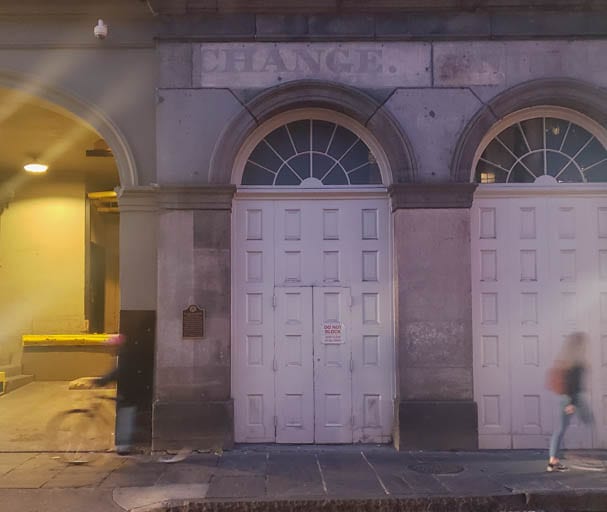
The Dark History of New Orleans’ Haunted Halls, Brothels and Hotels
New Orleans is a city for walking, and any given walk means passing by buildings with twisted tales that lend to the legends of a haunted history.
We’ve already mentioned the Omni Royal Orleans where a slave auction once stood. But rumors of hauntings at hotels in New Orleans are whispered throughout the Crescent City.
Third Stop: The Andrew Jackson Hotel
The Andrew Jackson Hotel with its beautiful balconies jutting over Royal Street was once a Federal Courthouse where Jackson was once indicted for contempt of court.
Before it was a courthouse, it was the site of a boarding house for boys. It’s believed the building was destroyed in one of the great fires that swept New Orleans in 1794 and that some of the boys were killed. This may explain the consistent sightings of ghostly young boys in the Andrew Jackson Hotel.
Fourth Stop: Bourbon Orleans Hotel
I once stayed in the Bourbon Orleans Hotel, even opting for the most haunted floor, the 6th floor, where a Confederate Soldier is said to roam, and where a nun is reported to make late-night, bedside appearances in room 644.
Despite my best efforts, I saw no ghosts during my stay, but I did join a free ghost tour offered to guests and learned all about the hauntings of the place – especially the ghosts of the ballroom where a loan dancer is sometimes spotted swaying in the moonlight.
Once an ornate place where society balls and duels took place, the ballroom was later converted into a convent, chapel, and orphanage where the nuns took care of children – many of whom were killed when Yellow Fever swept through the city during the 19th century.
And so it is that the ghosts of children are said to join the dancer, the Confederate Soldier, and the nun amongst the many haunted legends of the Bourbon Orleans Hotel.
Fifth Stop: Dauphine Orleans Hotel
While I can’t get into all of the haunted hotels of New Orleans in a single post, it’s impossible to leave out the dark history of the Dauphine Orleans Hotel. It was a hospital during the Civil War, which may explain the soldier sometimes seen here, but in 1857 the hotel earned its place in history by becoming the first licensed brothel of New Orleans.
With fines levied across the Red Light District in the prostitution crackdown of the era, Miss May Baily paid the fee in advance and continued to operate. Her license still hangs on the wall of May Baily’s Place, a bar connected to the hotel (known today for serving a killer Pimm’s Cup).
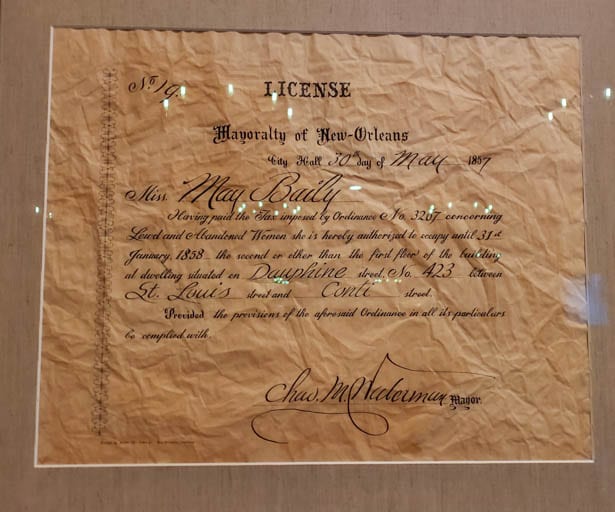
The most famous ghost of the Dauphine Orleans Hotel and May Baily’s Place is not the Civil War soldier, nor is it one of May Baily’s gals who is said to rearrange bottles in the bar on occasion.
No, the most famous ghost is that of May Baily’s sister, Millie, who is called the “Lost Bride”. Millie Baily’s fiancé died before their wedding, which may be why a ghostly woman in a wedding dress is sometimes spotted roaming the halls of the hotel.
To Tour or Not to Tour: Should You Get a Guided Tour of the Dark History of New Orleans?
The above hauntings offer a great self-guided ghost tour of the French Quarter. To really dig into the stories, though, buying a ghost tour is worth it.
There are tons of offerings for a ghost tour. When my friends and I visited New Orleans, we opted for the adult-only Lewd Spirits Tour, which touched on the bars and former Red-Light District in the French Quarter.
We carried our drinks and stopped at various bars, prompting the tour guide to joke we were mixing spirits with spirits. It cost about $35 and it was worth every penny for the history lesson and for a really good time.
Here are a few more tours to check out:
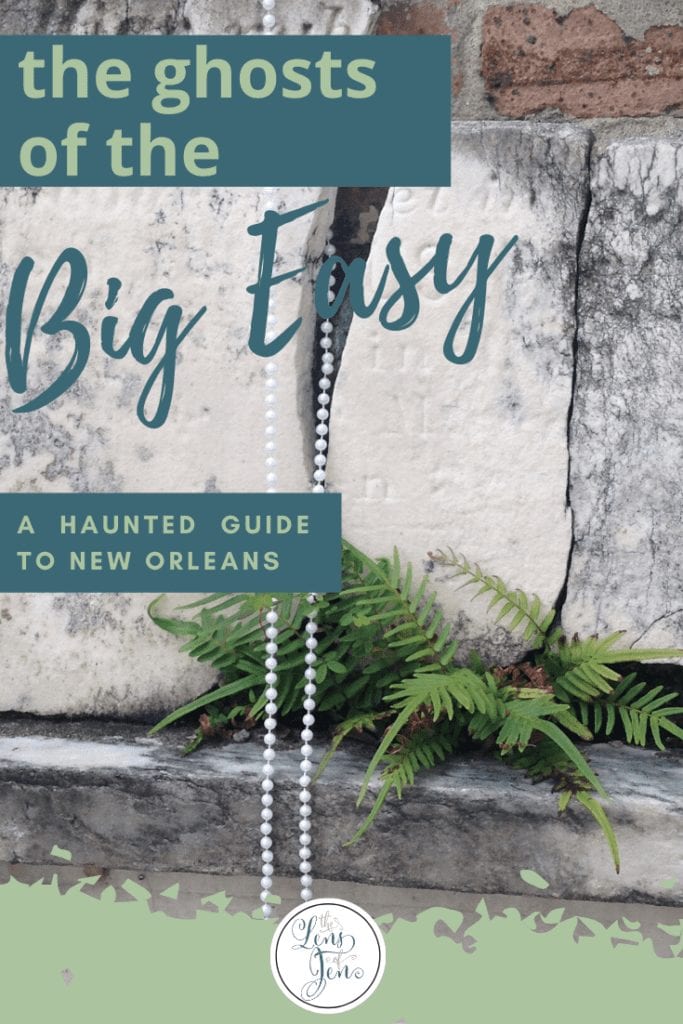
Where to Stay Near Haunted New Orleans
Staying near the haunted history of New Orleans is also staying in the thick of the action! Though I usually stay far away from the crowds, I actually really like staying in the midst of it all in the French Quarter of New Orleans.
Here’s a map with available homestays and hotels near the dark history of New Orleans:
About the Author
Hi! I’m Jen!
I’m a freelance writer and travel blogger who quit my nine-to-five after my fiancé, Jeff, died of cancer at the age of 40. When he died, I realized that life is just too short to delay our dreams. Since my dream was to travel and write, I now travel and write full-time. Today I wear hiking boots instead of heels and collect experiences instead of things.

